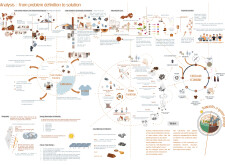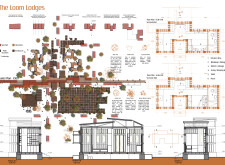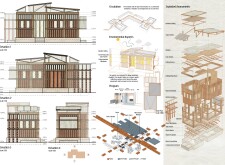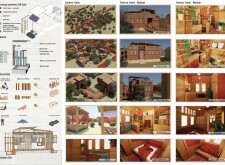5 key facts about this project
### Project Overview
The Loom Lodges initiative is situated in Palestine, addressing the socio-economic and environmental challenges posed by the fast fashion industry while aiming to promote sustainable community development. The design integrates innovative architectural principles with a focus on local materials and cultural relevance, supporting an approach that advocates for sustainability and community empowerment.
### Design Philosophy
The design framework is rooted in the principles of "Slow Fashion," which emphasizes ethical crafting and self-sufficiency. It seeks to mitigate the impacts of the fast fashion industry, characterized by environmental degradation and exploitative labor practices. By creating a self-sustaining environment, the project aims to uplift local communities economically and socially while honoring traditional craftsmanship.
### Spatial Configuration and Materiality
The master plan incorporates a variety of micro-homes, public spaces, and farming areas, facilitating a balance between private and communal living. Pathways are strategically placed to improve accessibility throughout the site. Each building unit is designed modularly to optimize natural light and airflow.
The selection of materials reflects a commitment to local resources, utilizing adobe for its thermal regulation properties, sustainably sourced wood for structural integrity, cork panels for insulation, and polycarbonate panels to enhance daylighting while supporting passive climate control strategies.
### Community Engagement and Educational Integration
The project emphasizes community empowerment, particularly for local women, by involving them in the crafting processes and ownership of projects. This model fosters agency and self-sufficiency within the community. Additionally, workshops embedded in the design provide educational opportunities focused on sustainable practices in fashion, thereby enhancing local knowledge and skills. Architectural details resonate with the vernacular style while incorporating modern design elements, creating a dialogue between tradition and innovation.






















































